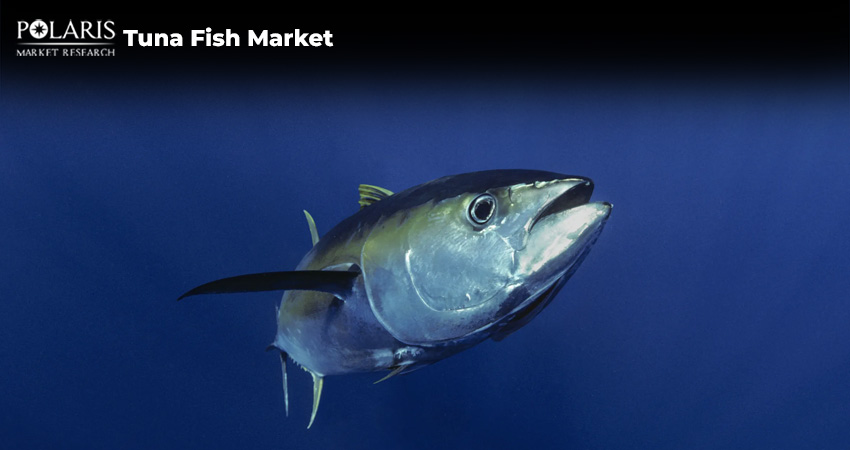What Makes Tuna a Global Culinary Staple?

Fish are widely popular globally owing to their significance in food, culture, recreation, and as pets. As a food source, fish are a dietary staple in many countries, renowned for their high nutritional value and variety. In the pet industry, fish like bettas and goldfish are widely kept animals, appreciated for their aesthetic appeal and relatively low-maintenance care. Culturally, fish carry rich symbolic meanings, representing luck, prosperity, and spirituality in various traditions.
Among the many species of fish, tuna stands out as one of the most widely consumed and commercially important. Known for their rich flavor and high protein content, tuna fish are a staple in global cuisine. Continue reading as we explore the uniqueness of tuna, its common species, and the potential health benefits of consuming it.
What Makes Tuna Unique?
Tuna is a type of large ocean fish that constitutes the genus Thunnus. Tuna fish are closely related to mackerels and are placed within the Scombridae family. They are highly valued as food all across the globe.
Tuna fish come in different shapes and sizes based on the species, but they all have some things in common. Their long, strong bodies, shaped like a torpedo, help them swim fast. The bodies of tuna narrow toward the tail, which is usually forked or shaped like a crescent moon.
In terms of color, tunas are dark on top and silver underneath, often with an iridescent shine. Other special features of tuna include a thick area of large scales near the shoulders, small finlets (tiny fins) behind their main fins, and a noticeable ridge (called a keel) on each side near the tail.
An interesting thing about tuna is that they can keep their body warmer than the surrounding water. This is something that most fish can’t do. Tunas carry a special system of blood vessels under the skin that helps them hold heat. As a result, tunas can swim long distances without getting tired. In fact, parts of their body can be up to 21°C (or about 39°F) warmer than the water they live in. Now, that’s a true biological miracle!
World Tuna Day: Raising Awareness for a Vital Resource
The UN General Assembly announced World Tuna Day in December 2016 to highlight the importance of sustainably managing tuna stocks. The inaugural festivity of World Tuna Day occurred in May 2017. Since then, the day is observed every year on May 2. The World Tuna Day serves as a global reminder of tuna’s contribution to nutrition, economies, and marine ecosystems. It also emphasizes the urgent need to combat overfishing and illegal fishing practices.
The goal of the day is to encourage governments, industry stakeholders, and consumers to work together to preserve tuna populations for the long term. Through education, policy reform, and responsible consumption, it fosters a shared commitment to protecting one of the most valuable and vulnerable fish species globally.
What Are Most Common Tuna Fish Species?
There are several species of tuna fish. Each of these tuna species has distinct features and culinary uses. The most common include:
Skipjack Tuna (Katsuwonus Pelamis): Skipjack tuna is the most commonly caught tuna and accounts for the majority of canned tuna products. It’s smaller in size, grows quickly, and is found in tropical and warm-temperate oceans. Skipjack tuna features a stronger flavor and darker flesh as compared to other species.
Yellowfin Tuna (Thunnus Albacares): Yellowfin tuna is recognized by its bright yellow fins and streamlined shape. It is renowned for its speed and endurance in the open ocean. Being larger than skipjack, yellowfish tuna is widely used in high-quality fresh and frozen seafood products.
Albacore Tuna (Thunnus Alalunga): Albacore tuna is migratory and travels vast distances across oceans. It carries pale flesh and has a milder flavor. Albacore tuna is highly valued in Western regions like the US and Europe for its light texture.
Bigeye Tuna (Thunnus Obesus): Bigeye tuna lives in deeper, colder waters. It resembles yellowfin but can grow larger and offer better quality meat for raw preparations. Its rich flavor and higher fat content make it particularly prized in sushi and sashimi.
Bluefin Tuna (Thunnus Thynnus): Bluefish tuna has a deep red flesh, high fat content, and luxurious texture, making it the most valuable of all tuna species. It can grow over 1,000 pounds and is capable of maintaining body temperatures far above the surrounding ocean.
What Are Potential Health Benefits of Consuming Tuna?
Tuna is highly prized for its impressive nutritional profile. High in lean protein and low in fat, tuna provides essential nutrients such as:
- Omega-3 Fatty Acids: Promote heart health and support brain function.
- Vitamin D and B12: Support bone health and energy metabolism.
- Selenium and Iodine: Important for thyroid function and immunity.
- Iron and Potassium: Contribute to muscle function and oxygen trans.
Owing to all these potential health benefits, una is a go-to choice for athletes, fitness enthusiasts, and individuals who want to maintain a balanced diet.
What Is Cultural and Culinary Significance of Tuna?
Tuna holds deep culinary significance across cultures worldwide. In Japan, maguro (tuna) is a staple in sushi and sashimi. Tuna is widely incorporated into fresh salads, pasta dishes, and spreads across Mediterranean countries. In North America and Europe, canned tuna serves as a household essential, used in quick meals, sandwiches, and casseroles. Beyond its culinary versatility, tuna also connects people to the ocean, representing a food source that bridges cultures and continents.
Final Thoughts
In conclusion, tuna represents the ocean’s abundance, is a key part of global cuisine, and reminds us of the delicate balance between consumption and conservation. Whether enjoyed raw, grilled, or canned, tuna remains one of the most cherished and fascinating species in the world’s oceans.

